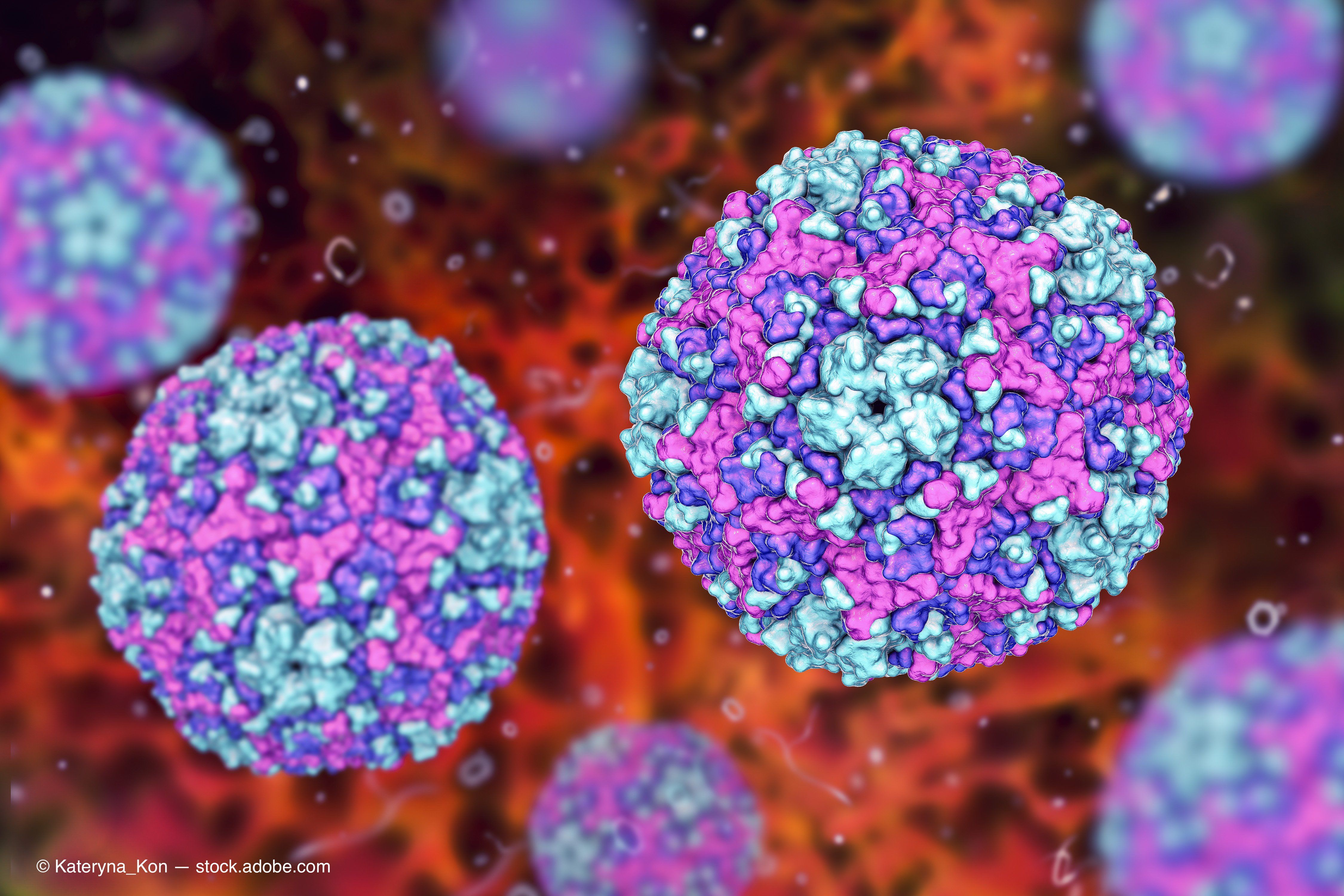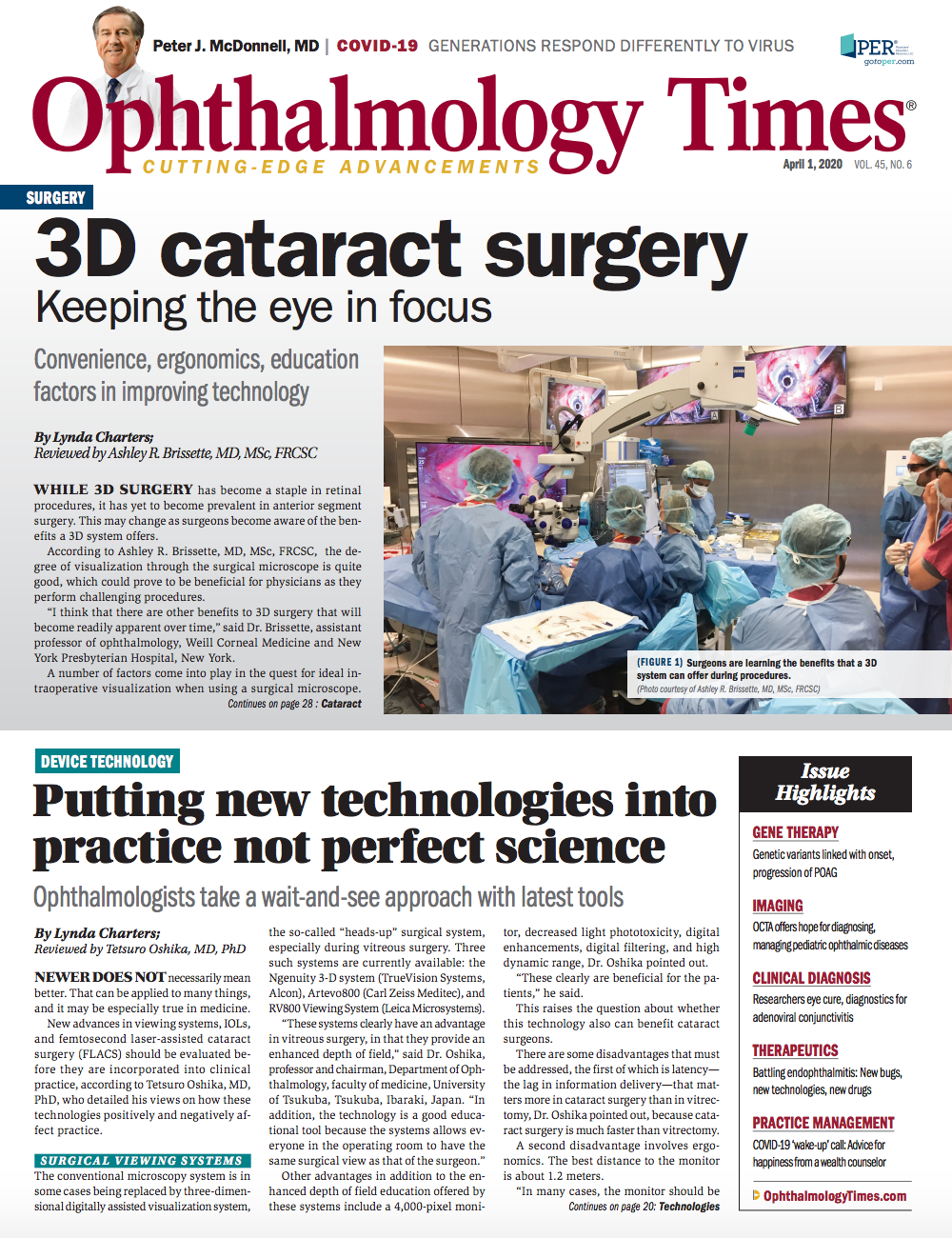Publication
Article
Digital Edition
Researchers eye cure, diagnostics for adenoviral conjunctivitis
Author(s):

Adenovirus conjunctivitis is rolling an age-old infection with potentially new diagnostics and cures.
This article was reviewed by James Chodosh, MD, PhD
Adenovirus conjunctivitis, extremely common, extremely contagious, and extremely expensive, is the cause of from 1% to 2% of all visits to primary care providers in the United States, with $430 million spent on diagnosing and treating the infection.
New and repurposed drugs are being explored to address this infection as well as a specific diagnostic test.
“The profound importance of this infection was underscored by a recent outbreak of adenovirus type 3 pneumonia and conjunctivitis in a neonatal intensive care unit that affected 23 neonates and nine adults, of whom four neonates died,” according to James Chodosh, MD, MPH. “This underscores the importance of treatment over and above just red eye.”
Related: Adenovirus keratitis viral pathogenesis: A persistent enigma
Dr. Chodosh, referenced a study published in Ophthalmology 2018;Sep 1. pii: S0161-6420(18)31075-3. He is the DG Cogan Professor of Ophthalmology in the Field of Cornea and External Disease, Howe Laboratory, Massachusetts Eye and Ear, Harvard Medical School, Boston.
According to Dr. Chodosh, successful clinical trials to identify treatments for adenovirus conjunctivitis have been stymied for two reasons.
The first is the relatively low positive predictive value (PPV), i.e., 78%, of the only commercially available rapid diagnostic test for adenovirus that was reported in the clinical trial of Auricloscene (NVC-422, NovaBay Pharmaceuticals) (Ophthalmology 2018;125:1344-53).
“The test did not work in the real world quite as well as we thought it would,”
Dr. Chodosh said.
The second reason involves the nonspecific nature of the clinical signs of conjunctivitis, which, Dr. Chodosh noted, when there is no outbreak of the infection and no “truly accurate, rapid diagnostic” test, it is difficult to conduct a clinical trial in the presence of sporadic cases only.
“Clinical trials for this infection are more likely to be successful if instituted during an outbreak,” he said.
Related: If medications fail, surgery option for treating infectious retinitis
Molecular diagnostics
These are coming. A recent study reported that an in-office molecular test, not a protein-based test, is in the offing (Surv Ophthalmol 2019;64:255-71).
“This type of test would be infinitely more sensitive,” Dr. Chodosh said.
Newly identified antiviral drugs, which include repurposed drugs, also offer hope for a cure. Recently evaluated therapeutics include salicylanilide antihelmintics such as niclosamide, which is FDA-approved (Sci Rep 2019;9:17); mifepristone (Antiviral Res 2018;159:77-83); and cardiotonic steroids, i.e., digoxin and digitoxin (J Virol 2017;91:e01623-16), he reported.
“Because these drugs are already FDA approved, there is a shorter path to testing and topical use,” Dr. Chodosh said.
Brincidofovir (CMX001, Chimerix, Inc.), an experimental systemic drug of lower toxicity used systemically to treat patients with systemic adenovirus infections who underwent bone marrow transplants, also has shown very promising results in two studies (Biol Blood Marrow Transplant 2017;23:512-21 and J Clin Virol 2017;96:73-9) and may be a candidate for use in the eye.
“If this drug is approved, perhaps it can be repurposed for ocular use,” Dr. Chodosh suggested.
Related: Managing viral eye infection: What clinicians should know
How adenovirus works
The adenovirus succeeds in infecting host cells by binding of the adenovirus’ fiber knob to one of the host cell receptors that include CAR, CD46, MHC class II alpha chain, and in the corneal epithelium, GD1a glycan.
Dr. Chodosh reported that clinical trials are under way that are targeting the adenovirus receptor on the corneal epithelial cells, for example, APD-209 (Adenovir Pharma), a decoy receptor sulfated glycosaminoglycan.
In early trials, the drug was shown to be helpful; the investigators reported their findings in Virology 2019;11:E247. The phase III trials are ongoing, he noted.
Dr. Chodosh is hopeful for improved diagnostics and a cure for adenovirus conjunctivitis.
Related: Conjunctival melanoma: Unlocking mysteries of disease
“Considering the avalanche of new molecular diagnostics, eventually we are certain to have rapid, nucleotide-based, in-office testing that works as well as polymerase chain reaction,” he said. “The NovaBay trial confirmed what clinical trialists always knew, that is, that clinical trials are more productive when held in areas where the disease of interest is highly prevalent.”
Dr. Chodosh said if physicians are not sure the patient has the disease and they are enrolled, the value of the trial is diminished.
“The potential impact of a drug with efficacy against adenovirus conjunctivitis is high and will continue to attract interest from pharma because companies know that such a drug would be used a great deal in primary care settings by pediatricians and family care providers and by ophthalmologists, making this a potentially lucrative investment,” he concluded. “FDA-approved drugs repurposed for ocular use continue to be explored. New drug candidates will emerge as our basic understanding of adenovirus increases.”
Read more by Lynda Charters
James Chodosh, MD, PhD
E: james_chodosh@meei.harvard.edu
Dr. Chodosh is a past consultant to Shire Pharmaceuticals.
Newsletter
Don’t miss out—get Ophthalmology Times updates on the latest clinical advancements and expert interviews, straight to your inbox.
2 Commerce Drive
Cranbury, NJ 08512
All rights reserved.






